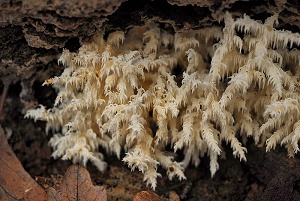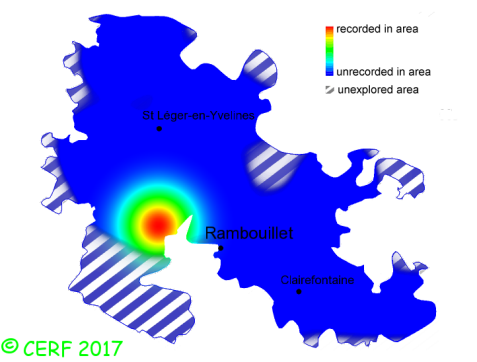| Hericium clathroides (Pall.) Pers. |
|
|
|
|
|
|
The fruiting body is composed of many thin, coral-shaped, erect branches like a weeping willow, the lower surface being covered which hanging spines, white to yellowish, sometimes slightly pink with age, with a common thick stem. The flesh is white, soft and brittle; its taste is mild; the odour is pleasant. The fertile surface is made of concolorous spines up to 1 cm long, arranged in lines. The spore print is white.It grows on wood, in old deciduous woods, on rotting felled trees or at the base of weakened trees, preferably on beech, but also on elm, ash, walnut. The fruiting period takes place from July to December.
Distinctive features : whitish fruiting body composed of many thin, erect branches coral-shaped or like a weeping willow; lower surface covered which hanging aligned spines up to 1 cm long; on deciduous wood (mostly beech) Hericium clathroides is rare and confined in the forest of Rambouillet, and is quite rare, more generally speaking . | ||
|
page updated on 14/01/18

